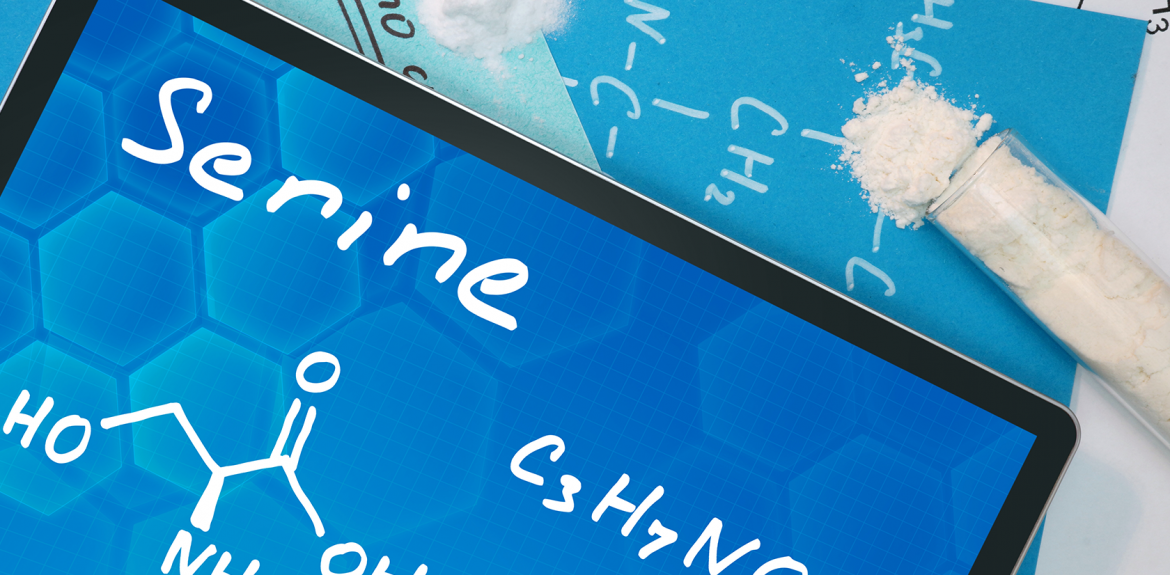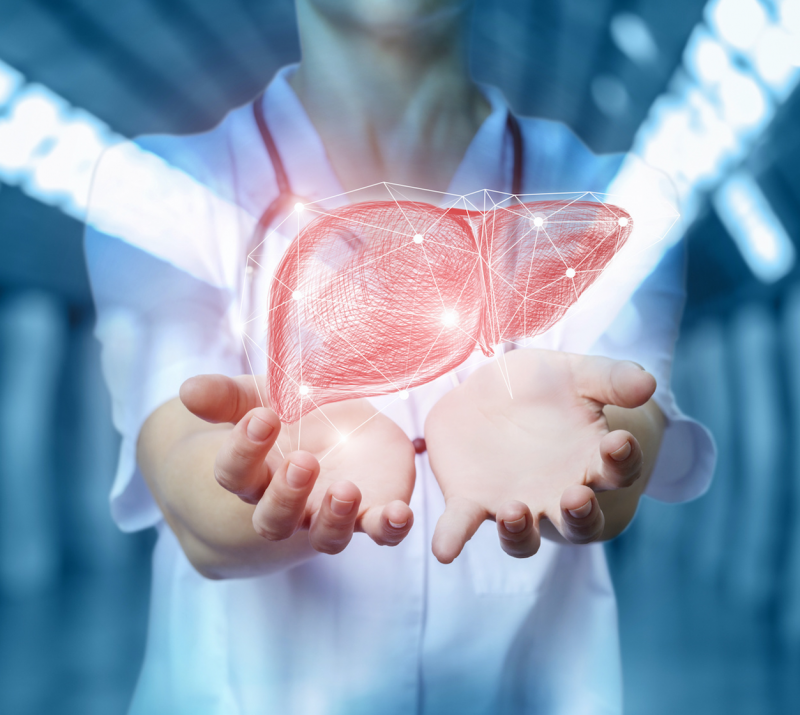
PROJECT OVERVIEW
Serine Supplementation for Obese Subjects With Fatty Liver Disease
https://clinicaltrials.gov/ct2/show/NCT02599038
To elucidate the molecular mechanisms underlying non‐alcoholic fatty liver disease (NAFLD), we recruited 86 subjects with varying degrees of hepatic steatosis (HS). We obtained experimental data on lipoprotein fluxes and used these individual measurements as personalized constraints of a hepatocyte genome‐scale metabolic model to investigate metabolic differences in liver, taking into account its interactions with other tissues. Our systems level analysis predicted an altered demand for NAD+ and glutathione (GSH) in subjects with high HS. Our analysis and metabolomic measurements showed that plasma levels of glycine, serine, and associated metabolites are negatively correlated with HS, suggesting that these GSH metabolism precursors might be limiting. Quantification of the hepatic expression levels of the associated enzymes further pointed to altered de novo GSH synthesis. To assess the effect of GSH and NAD+ repletion on the development of NAFLD, we added precursors for GSH and NAD+ biosynthesis to the Western diet and demonstrated that supplementation prevents HS in mice. In a proof‐of‐concept human study, we found improved liver function and decreased HS after supplementation with serine (a precursor to glycine) and hereby propose a strategy for NAFLD treatment.
PROJECT DETAILS
- Category NAFLD

| Tracking Information | |
|---|---|
| First Submitted Date ICMJE | November 3, 2015 |
| First Posted Date ICMJE | November 6, 2015 |
| Last Update Posted Date | October 18, 2016 |
| Study Start Date ICMJE | October 2015 |
| Actual Primary Completion Date | October 2016 (Final data collection date for primary outcome measure) |
| Current Primary Outcome Measures ICMJE (submitted: November 5, 2015) |
Liver fat content [ Time Frame: 2 weeks ]Liver fat measured by magnetic resonance spectroscopy |
| Original Primary Outcome Measures ICMJE | Same as current |
| Change History | Complete list of historical versions of study NCT02599038 on ClinicalTrials.gov Archive Site |
| Current Secondary Outcome Measures ICMJE (submitted: November 5, 2015) |
Triglycerides [ Time Frame: 2 weeks ]Cholesterol fractions [ Time Frame: 2 weeks ] |
| Original Secondary Outcome Measures ICMJE | Same as current |
| Current Other Pre-specified Outcome Measures | Not Provided |
| Original Other Pre-specified Outcome Measures | Not Provided |
| Descriptive Information | |
| Brief Title ICMJE | Serine Supplementation for Obese Subjects With Fatty Liver Disease |
| Official Title ICMJE | Serine Supplementation in Nonalcoholic Fatty Liver Disease |
| Brief Summary | In this study, the investigators aim to increase the liver tissue level of GSH in NAFLD patients by short-term dietary serine supplementation and improve their liver function by lowering the oxidative stress resulting from hepatic steatosis. |
| Detailed Description | There is a strong correlation between major adverse health consequences of obesity and development of non-alcoholic fatty liver disease (NAFLD). NAFLD is characterized by abnormal hepatic accumulation of triglycerides and other lipids. It has become a worldwide health problem that accelerates cirrhosis, type 2 diabetes mellitus (T2DM), and especially premature cardiovascular morbidity and mortality.The plasma level of glutathione (GSH) is typically depleted in individuals with metabolism related disorders. However, cellular GSH levels cannot be increased by supplementing GSH and it must be synthesized within the liver either de novo or by salvation pathway. The investigators found that the level of GSH is not enough to maintain and regulate the thiol redox status of the liver in subjects with high hepatic steatosis at fasting stage due to the depletion of glycine. Glycine can be synthesized via the interconversion of serine through serine hydroxymethyl transferases (SHMT1 and SHMT2) with concomitant conversion of tetrahydrofolate (THF) into 5,10-methylene-THF (CH2-THF). It has been shown that the serine synthesis is downregulated in patients with NAFLD and supplementation of serine has attenuated alcoholic fatty liver by enhancing homocysteine metabolism in mice and rats.In this study, the investigators aim to increase the liver tissue level of GSH in NAFLD patients by short-term dietary serine supplementation and improve their liver function by lowering the oxidative stress resulting from hepatic steatosis.Ten obese patients (BMI 30 – 39.9 kg/m2) with ultrasound and CT-verified non-alcoholic fatty liver disease (NAFLD). Subjects will be recruited from the Swedish CArdioPulmonary bioImage Study (SCAPIS) in Gothenburg. The participants in this study (50-65-year-old men and women) are randomly recruited from the Swedish Population and Address Register. Currently, 1050 subjects have been analyzed and 5000 additional subjects will be analyzed over the next 2 years. By January 2015, over 2000 subjects have been analyzed. Each subject is extensively phenotyped over two days. This includes extensive blood samples, anthropometry, carotid and liver ultrasound, and a CT examination that includes coronary calcium score, CT angiography of coronary arteries, thoracic aorta, and assessment of epicardial fat, liver fat, and subcutaneous abdominal fat.Preliminary analysis of the first 1050 subjects indicates that approximately 20% fulfill the criteria for NAFLD, consistent with data in other western populations. |
| Study Type ICMJE | Interventional |
| Study Phase ICMJE | Phase 1 Phase 2 |
| Study Design ICMJE | Allocation: N/A Intervention Model: Single Group Assignment Masking: None (Open Label) Primary Purpose: Diagnostic |
| Condition ICMJE | Non-alcoholic Fatty Liver Disease |
| Intervention ICMJE | Dietary Supplement: Serine supplementationSerine supplementation (200 mg/kg/day) |
| Study Arms ICMJE | Experimental: Serine supplementationSerine oral administration 20mg/kg/dayIntervention: Dietary Supplement: Serine supplementation |
| Publications * | Not Provided |
| Recruitment Information | |
| Recruitment Status ICMJE | Completed |
| Actual Enrollment ICMJE (submitted: November 5, 2015) |
10 |
| Original Estimated Enrollment ICMJE | Same as current |
| Actual Study Completion Date ICMJE | October 2016 |
| Actual Primary Completion Date | October 2016 (Final data collection date for primary outcome measure) |
| Eligibility Criteria ICMJE | Inclusion Criteria:BMI 30 – 39.9 kg/m2; stable weight (+/- 2 kg) within the last six monthsSex Males, pre-, and post-menopausal femalesWomen of childbearing potential can only be included if a safe and reliable contraception is used, e.g., oral contraceptivesDiagnosis NAFLD established by both liver CT and ultrasoundConsent Patients should have given their written consent to participate in this studyExclusion Criteria:Chronic liver disease other than NAFLD (viral hepatitis, autoimmune liver disease, hemochromatosis, homozygous alpha1-antitrypsin deficiency and Wilson disease)Previous gastric or small bowel surgeryInflammatory bowel diseaseUncontrolled diabetes mellitus (fasting blood glucose >6.7 mmol/L), hypothyroidism or hyperthyroidism, or other significant endocrine disease. (A subject who is euthyroid on a stable replacement dose of thyroid hormone is acceptable provided the TSH is within normal range).Pregnancy. A urine pregnancy test will be performed the day before start of medication. Women of childbearing potential can only be included if a safe and reliable contraception is used, e.g., oral contraceptives.Elevations of transaminases (ALAT/ASAT) or alkaline phosphatase or bilirubin above 2xULN (upper limit of normal) the day before start of serine supplementation.Other serious disease, including depressive disorders treated by medicationPatients who will not comply with the protocol. |
| Sex/Gender ICMJE | Sexes Eligible for Study:All |
| Ages ICMJE | 20 Years to 65 Years (Adult, Older Adult) |
| Accepts Healthy Volunteers ICMJE | No |
| Contacts ICMJE | Contact information is only displayed when the study is recruiting subjects |
| Listed Location Countries ICMJE | Sweden |
| Removed Location Countries | |
| Administrative Information | |
| NCT Number ICMJE | NCT02599038 |
| Other Study ID Numbers ICMJE | Serine-NAFLD |
| Has Data Monitoring Committee | No |
| U.S. FDA-regulated Product | Not Provided |
| IPD Sharing Statement ICMJE | Plan to Share IPD:No |
| Responsible Party | Hanns-Ulrich Marschall, Sahlgrenska University Hospital, Sweden |
| Study Sponsor ICMJE | Hanns-Ulrich Marschall |
| Collaborators ICMJE | Not Provided |
| Investigators ICMJE | Principal Investigator:Hanns-Ulrich Marschall, MD, PhDSahlgrenska Academy and University Hospital |
| PRS Account | Sahlgrenska University Hospital, Sweden |
| Verification Date | October 2016 |

